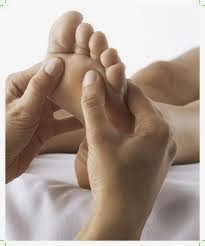
There is quite a bit of misinformation and confusion around the terms deep tissue massage and Swedish massage. While you may think you know the difference between these two common massage techniques, you may be surprised by the reality of it. When you come to a massage therapist and request a deep tissue massage or Swedish massage, what you think you’re requesting and what your therapist is trained to know, may be very different. So, before we get into this I want you to clear your mind of any negative thoughts towards either one of these techniques, and open your mind to balance the information.
Keep in mind that anytime you have a session with a massage therapist there should be a discussion of your desired results and goals for the visit as well as an understanding that you help to define the techniques and pressure used during your session. Never hesitate to let your massage therapist know if you have any discomfort or pain during the session so that they can adjust their techniques and pressure accordingly.
Every massage therapist is different, but there are four common movements in Swedish massage. Effleurage is a smooth, gliding stroke used to relax soft tissue. Petrissage is the squeezing, rolling, or kneading that follows effleurage. Friction involves movement in opposing directions that cause layers of tissue to rub against each other or separate. Tapotement is a short, alternating tap done with cupped hands, fingers, or the edge of the hand. These combined with stretching and/or mobilization of joints is generally what you can expect during a typical Swedish massage. All of these Swedish techniques can be done with light or heavy pressure; it’s generally just a broad pressure.
Deep tissue massage is used when there are specific areas that may need a little more attention due to soreness, stiffness, or injury. Deep tissue massage involves more focused pressure and pinpoint techniques and mobilizations. While your therapist may apply deeper pressure at certain times, that’s not the defining difference between these two common techniques. Swedish massage is meant to relax the body and mind, while deep tissue massage is focused on relieving tension and helping with muscular injuries in specific areas.
The key here is knowing the difference between what pressure is helping during your session, and what pressure is uncomfortable and may end up doing more harm than good. Again, in any session there should be an understanding between you and your therapist as to what pressure will work best, and you should inform your therapist if you feel the pressure is too much or too little, so they can adjust their technique accordingly. Don’t ever be afraid to speak up.
Remember, everyone’s body is different, which results in the needs of their sessions to be different. There are those that don’t feel as if they’ve had a good massage if the pressure during the massage was ‘light’ leaving them somewhat sore. Others prefer massages that simply relax them without any other goals. What you need from your session is what you need. Getting a Swedish massage doesn’t necessarily mean light pressure, and a deep tissue massage isn’t necessarily going to leave you in pain. No session, no matter what it’s called, should be painful. There is a clear difference between something being uncomfortable, so you may tense slightly at first but then can breathe through it pretty easily, and that which is painful, so you’re unable to breathe and relax through it, causing more harm than good.
Don’t feel like you must stick it out in a massage that is causing you more than a little discomfort because you feel that you won’t reap the benefits without it. Know your body and know the signals your body is sending to inform you of what feels uncomfortable and what is detrimental. If you can’t relax through it, or your muscles are tensing you may need to ask your massage therapist to lighten their pressure. Also remember that light pressure done by a massage therapist that is educated on your needs and the proper way to administer them can be just as effective as deep pressure. If your massage therapist is going lighter, and you feel you would like a little more depth into the stroke, inform them.
The main point that I want you to take from this is that your session is your session. Your massage therapist wants to provide you with a service that you are happy with, and for you to return to achieve your wellness goals. An open line of communication with your massage therapist before, during, and after will help them to make sure that you received what you needed out of the session and that you are walking out of there better than you walked in. Make sure that you are giving your massage therapist the opportunity to adjust the treatment where needed to fit you, as well as letting them know what your body responded to best. Massages should not only be helpful, they should also be enjoyable.
(info courtesy of My Massage World)

